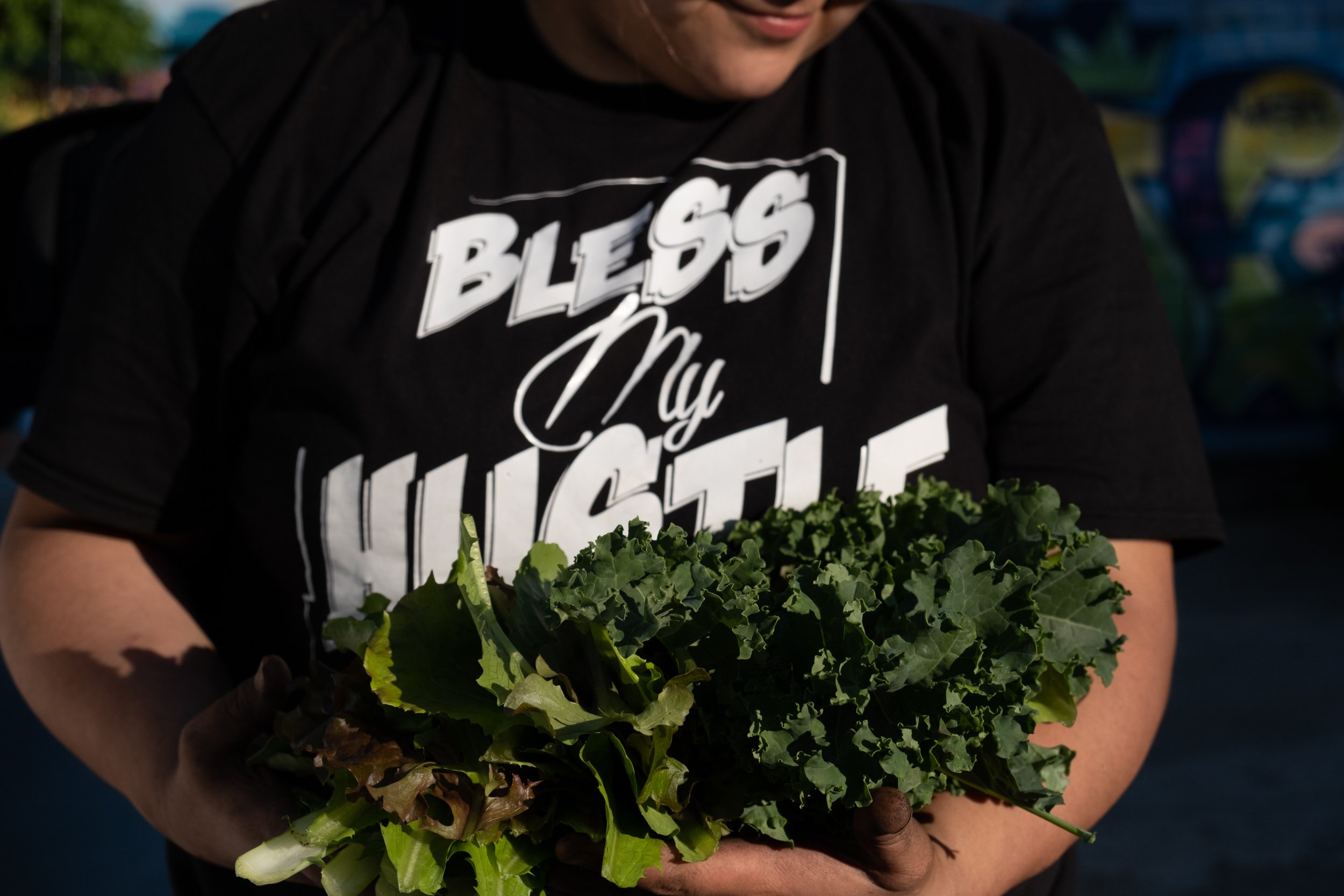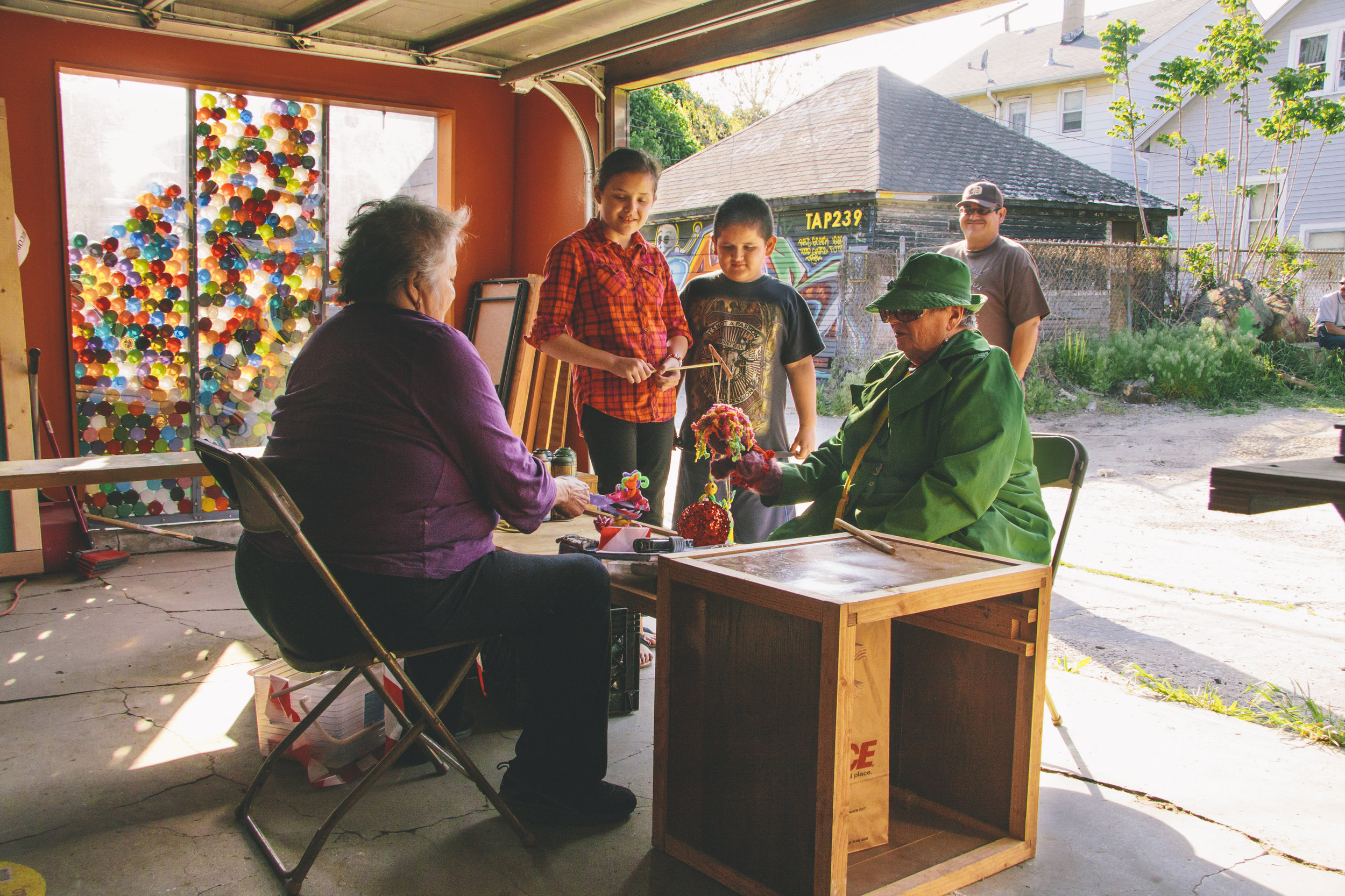
Practicing Justice through Place.
Inside Southwest Detroit practices justice through place. According to Project for Public Spaces, “with community-based participation at its center, an effective placemaking process capitalizes on a local community's assets, inspiration, and potential, and it results in the creation of quality public spaces that contribute to people's health, happiness, and well being.”
Participatory Design
At TAP many programs and places are developed through participatory processes. Groups of stakeholders form tables where information is exchanged dynamically between them and decisions are made collaboratively. Residents, youth, artists, architects, building owners, and other experts and decision-makers share information so that everyone's feedback is informed by each other.
Participatory design instructs decisions for development and design of Inside Southwest Detroit’s projects. This insures that development responds to residents needs and interests. The participatory process enhances social capital, local leadership development and furthers community capacity to identify and solve local challenges. As an ongoing practice rather than a single point-in-time activity, Young Nation remains at the forward edge of understanding and responding to community, especially as it growth and changes over time.
8869 Avis
8869 Avis is a portal for neighbors to the wider world of art and culture. It transformed an empty building and lots into a Plaza and Market space where residents connect with each other socially and artistically. Participatory design instructed all the decisions for development and design.. Our largest arts-led, place-based development was four years from idea to completion. A small group of youth, residents and artists with the support of the Detroit Collaborative Design Center and Et Al architectural firm, gathered input from the wider community about needs and dreams to inform the design and use of the building. At each stage of development this committee shared progress and sought input from the larger neighborhood to modify and insure that it remained consistent with their needs and ideas. Every aspect of the space is a manifestation of intentionality in design— from the exterior mural that wraps around and into the building to the outdoor patio and wrought iron work.
Outdoor Classroom
The outdoor classroom was built in 2021 as a COVID response and restored a connection between the organization and many of our neighbors that was disrupted during the first year of the pandemic.
The project was collaboratively developed in conversation with partners to meet Inside Southwest Detroit’s needs in the short term while also responding to the need for a cultural and healing space rooted in Puerto Rican identity led by Raul Echeverria of the Comité Cultural Boricua de Detroit. Our outdoor classroom’s design is informed by our Porch on TAP artist residencies, Puerto Rican casitas in the Bronx and Philadelphia, and the design of the Detroit Waldorf School's outdoor classrooms.
Outdoor classrooms on TAP meet the moment and set us up for a future with shared, accessible, multi-use space—allowing us to spend time together in a way that promotes community health and leaves a lasting physical intervention.
TAP Community Gardens
TAP Community Gardens is a community space for artists, neighbors , children and families to gather, learn, create, connect with the land, and learn to grow food and medicine sustainably.
”Perhaps more than in other communities, Latino community gardens, with their casitas, provide a place for social interactions in neighborhoods where social gathering places are often lacking. This study also points out the importance of community gardens in providing leadership, landscape design, and organizing experience for community members – experiences that sometimes spill over into other aspects of civic life…
Thus, the most important role of Latino gardens appears to be in community development, even though they are also important as open space, and to a lesser degree as sites for food production.”
-Laura Saldivar-Tanaka and Marianne E. Krasny (2004)
HEETT Wall 2018
HEETT Wall 2018 represents the realization of a dream. The Hip-Hop Elements Exposed Through Time mural celebrates hip-hop culture and history in the neighborhood.
The original HHEETT Wall was a production wall, led by Victor Villalobos, installed in 2000 featuring the work of prominent and aspiring aerosol artists. It was buffed in 2014 after the City of Detroit issued a blight violation to the building owner.
Freddy Diaz served as lead artist for the re-imagined HHEETT Wall, bringing together established and emerging aerosol artists. Residents of all ages came out day after day over a two-week period to watch its creation, talk with the artists and each other. The project built bridges between people, ages, cultures, and geographies in a sustainable and natural way of ethical re-development and engagement. The project heightens the exposure of the talented local artists while developing the next generation of youth artists.
Studio Luevanos
Named after The Alley’s inaugural and esteemed artist-in-residence, Mary Luevanos, the studio was the first of several place-based renovations that meet community needs with community assets.
For years the space hosted weekly art workshops throughout good weather months for youth and families when Inside Southwest Detroit didn’t have a permanent, brick and mortar home. Studio Luevanos meets neighborhood needs for physical space improvements and affordable artists' studios with assets we already have—residents' garages, creative neighbors, and an openness to innovate and share space at their homes with the community.
As more garages and other spaces are activated in the alley the impact forms a more connected, vibrant and beautiful community with grow.
Asset-Based Organizing
A local mason helps to rebuild the corner on Elsmere and Avis one brick at a time as he constructs a pillar that will become the doorway to Inside Southwest Detroit’s new space. (2017)
"(TAP) is looking at the community's needs as a to-do list and its assets as a toolbox. TAP... has nurtured powerful inter-generational relationships. Young artists are learning from the neighborhood elders, and elders have come to appreciate the passion and dedication of the young artists. Stereotypes are being broken down, art is being created, and a neighborhood is reconnecting with itself."
-Lee Schneider, Huffington Post








